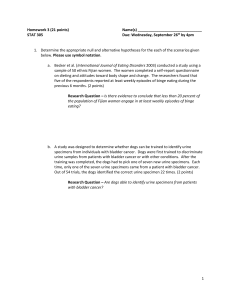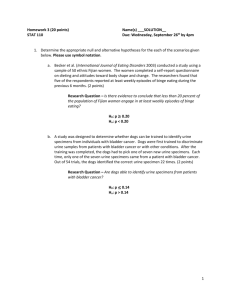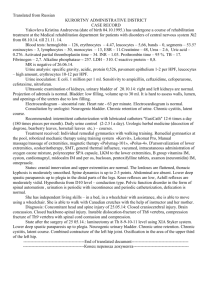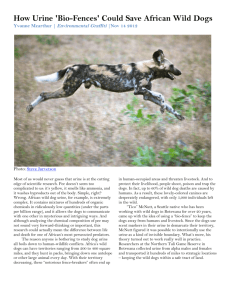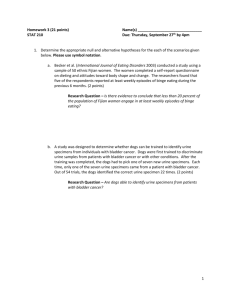Homework 3 (25 points) Name(s) _____SOLUTION________ STAT
advertisement
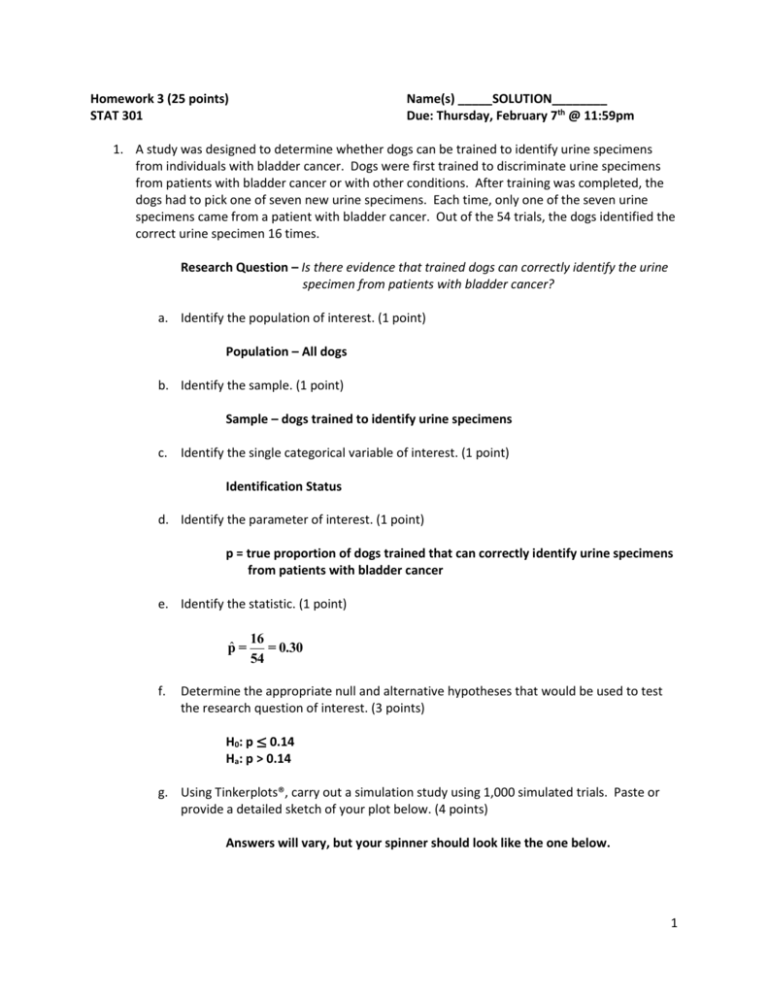
Homework 3 (25 points) STAT 301 Name(s) _____SOLUTION________ Due: Thursday, February 7th @ 11:59pm 1. A study was designed to determine whether dogs can be trained to identify urine specimens from individuals with bladder cancer. Dogs were first trained to discriminate urine specimens from patients with bladder cancer or with other conditions. After training was completed, the dogs had to pick one of seven new urine specimens. Each time, only one of the seven urine specimens came from a patient with bladder cancer. Out of the 54 trials, the dogs identified the correct urine specimen 16 times. Research Question – Is there evidence that trained dogs can correctly identify the urine specimen from patients with bladder cancer? a. Identify the population of interest. (1 point) Population – All dogs b. Identify the sample. (1 point) Sample – dogs trained to identify urine specimens c. Identify the single categorical variable of interest. (1 point) Identification Status d. Identify the parameter of interest. (1 point) p = true proportion of dogs trained that can correctly identify urine specimens from patients with bladder cancer e. Identify the statistic. (1 point) pˆ = f. 16 = 0.30 54 Determine the appropriate null and alternative hypotheses that would be used to test the research question of interest. (3 points) H0: p ≤ 0.14 Ha: p > 0.14 g. Using Tinkerplots®, carry out a simulation study using 1,000 simulated trials. Paste or provide a detailed sketch of your plot below. (4 points) Answers will vary, but your spinner should look like the one below. 1 h. Using the plot created in part g, calculate the estimated p-value for this study. (2 points) To calculate the p-value you want i. # of dots at 16 or more 1000 Using the p-value computed in part h, what conclusion can be made regarding the research question? (3 points) If the p-value is less than 0.05 then there is evidence that the dogs can correctly identify urine samples with bladder cancer. If the p-value is greater than 0.05 then there is not evidence that dogs can correctly identify urine samples with bladder cancer. 2. For each of the following scenarios, describe in context how the binomial distribution can be used to model the scenario. (4 points each) a. Antibiotic resistance occurs when disease-causing microbes become resistant to antibiotic drug therapy. Because this resistance is typically genetic and transferred to the next generations of microbes, it is a very serious public health problem. According to the CDC, 7% of gonorrhea cases tested in 2004 were resistant to the antibiotic ciprofloxacin. A physician prescribed ciprofloxacin for the treatment of 10 cases of gonorrhea during one week of 2004. n = 10 cases 2 outcomes: resistant, not resistant P(resistant) = 0.07 for each case Cases are independent of one another b. The actual rate of unintended pregnancies for women taking the pill is 5%. That is, if a doctor prescribes the pill to 100 new female users, 5 of them will have become pregnant within one year while taking the pill. A doctor prescribes the pill to 20 new female users and tracks their pregnancy status within the first year of use. n = 20 females 2 outcomes: unintended pregnancy, no unintended pregnancy P(unintended pregnancy) = 0.05 for each female Females are independent of one another 2
